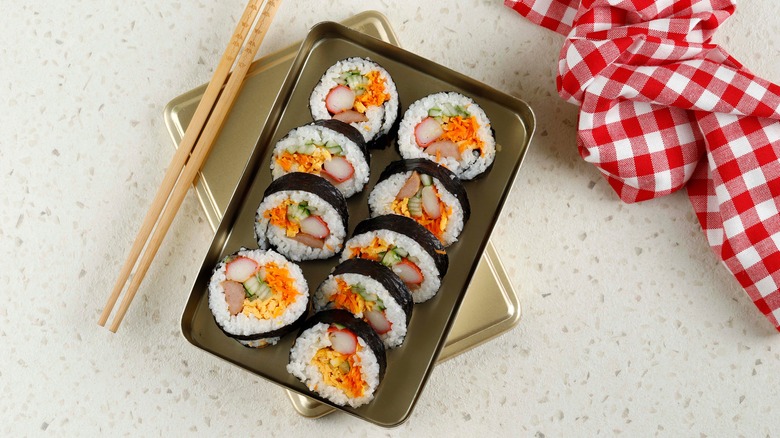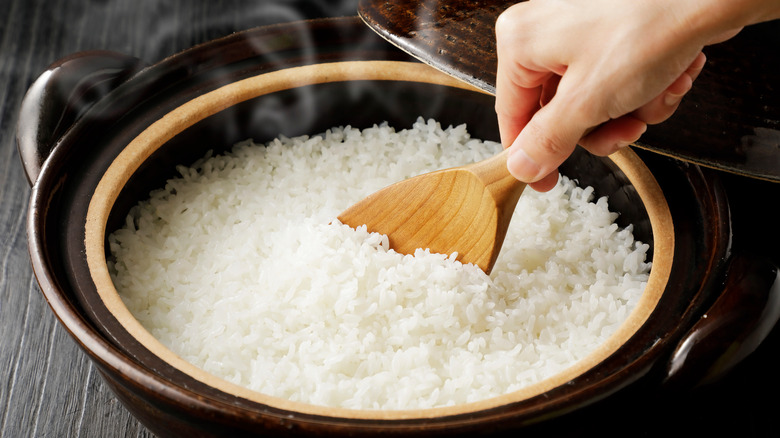What Kind Of Rice Works Best For Gimbap?
Although sometimes mistaken for a sushi roll given a certain superficial visual similarity, gimbap (sometimes spelled as kimbap) is anything but, and you really shouldn't try to compare gimbap and futomaki, given their underlying structural differences. A classic on-the-go Korean dish popular in school lunch boxes, picnic baskets, and commonly eaten on school field trips, road trips, and during outdoor activities, gimbap literally translates to seaweed rice roll, from gim (or kim), which means edible seaweed, and bap, which means rice.
Although it is possible to have a gimbap that is only filled with rice, which is then served as a side alongside other small dishes, most gimbap include a variety of fillings. In contrast to futomaki and sushi rolls, which tend to feature a filling of raw fish and seafood, gimbap filling is usually cooked, and features an often colorful and hearty mixture of protein and vegetables. Although it often comes down to the preference of the person making the gimbap, classic fillings include beef bulgolgi, fish cake, omelette, yellow pickled radish, burdock root, and vegetables like blanched spinach and carrots, which are all prepared individually before being assembled together with the cooked rice.
Certain types of rice work better than others for gimbap
For the best results in gimbap, Roy Choi recommends using short-grain rice, as it's easier to make a tighter and more compact roll that way than using long-grain rice. Both white and brown short-grain rice can be used, but white rice contains more starch than brown rice and will better hold its shape in a roll. Delish likes to use sticky glutinous rice in gimbap, due to its "mild sweetness, holding power, and satisfying chew."
Use a rice cooker or follow the directions on the package of rice to cook the rice to just al dente. Korean Bapsang recommends using a little less water than usual so that the rice comes out a little drier than usual. The rice should then be lightly seasoned with sesame oil for a savory flavor and fragrance. Use a bamboo mat, plastic wrap, or just your fingers to tightly form the rolls, and make sure you use a sharp knife to cut the rolls. For an elevated touch, finish off the gimbap by lightly brushing the rolls with sesame oil and topping with a sprinkle of sesame seeds.

